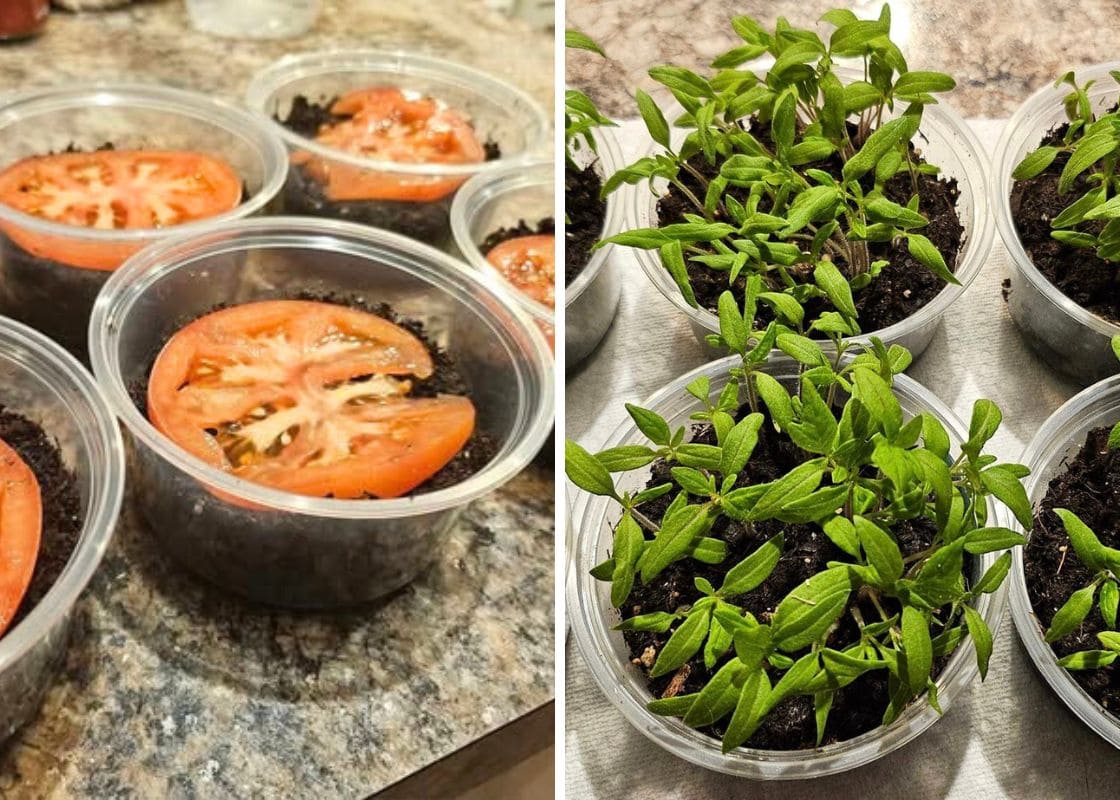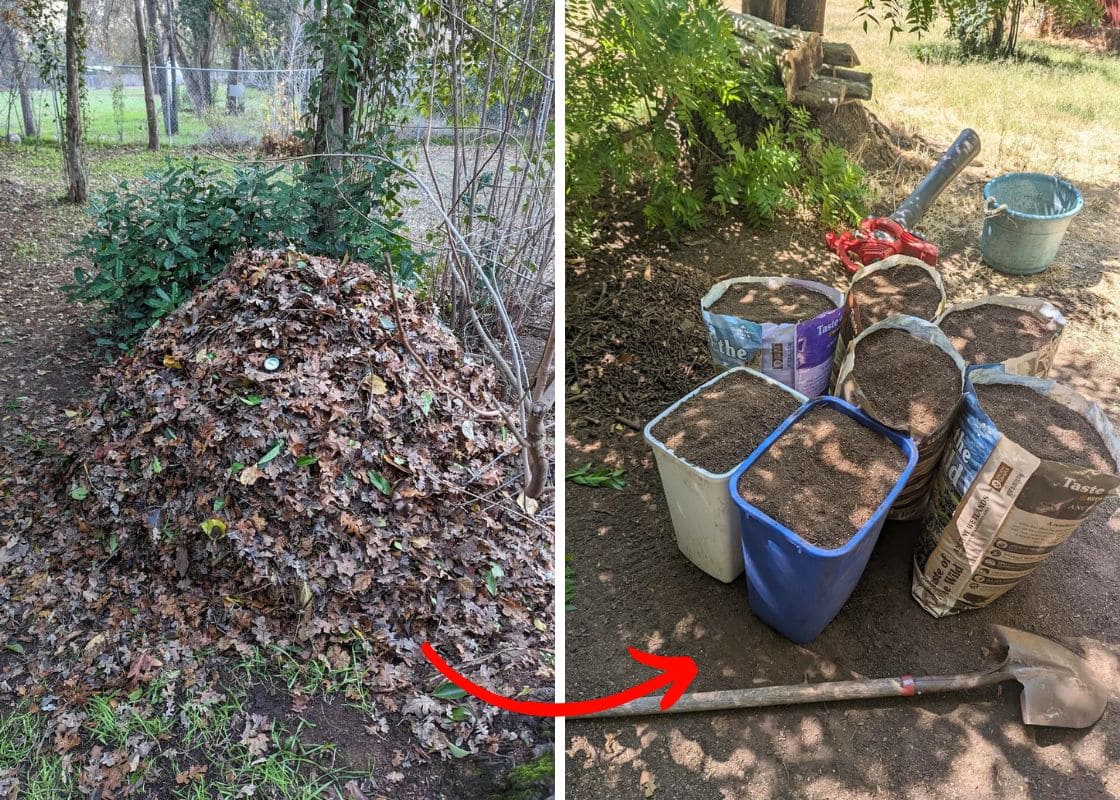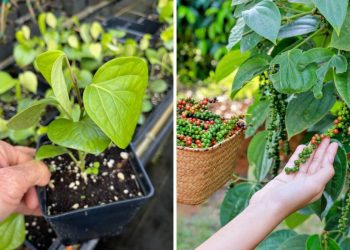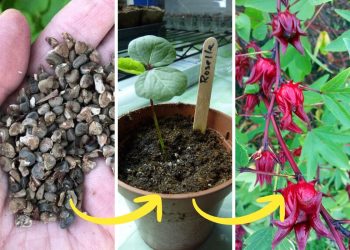When it comes to morning glory, many gardeners worry about its invasiveness. It’s true, in some regions, morning glory can spread quickly and take over spaces if not managed properly.
But don’t let that deter you. With its trumpet-shaped flowers in shades of blue, purple, pink, and white, it can transform a simple garden into a colorful oasis.
These flowers open in the morning sunlight, bringing life and vibrancy to any outdoor space.
Summary:
- You should scarify seeds, and plant 1/4 inch deep in a pot, then transplant morning glory after the last frost in a sunny pot.
- Water regularly, use low-nitrogen fertilizer, provide support for climbing, and prune to encourage blooms. Protect from deer and rabbits with a sturdy fence.
- Yoi can collect seeds when pods turn brown in late summer to fall, then store dried seeds in a cool, dark place for next season.
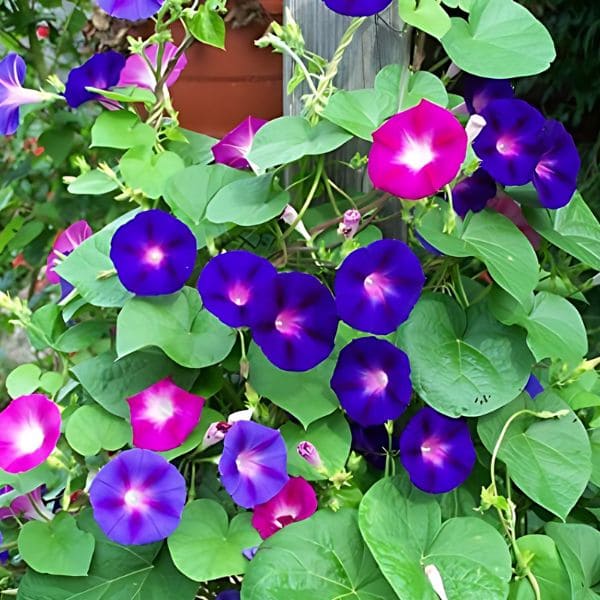
| Scientific name | Ipomoea |
| Common name | Morning glory, common morning glory |
| Plant type | Annual |
| Mature size | 6–10 ft. tall, 3–6 ft. wide |
| Bloom time | Summer, fall |
| Flower color | Purple, white, pink, blue |
| Sun requirement | Full sun |
| Soil type | Moist, well-drained |
| Hardiness zones | 2-11 USDA |
| Toxicity | Toxic to human and pets |
Growing Morning Glory From Seeds
Preparation
Here are several species that are easy to cultivate you can consider:
- Ipomoea purpurea: owns purple, pink, and white flowers. It’s highly adaptable, thriving in full sun and well-drained soil.
- Ipomoea tricolor: Featuring stunning blue flowers often with white or yellow centers. It is a vigorous climber, ideal for warm climates.
- Ipomoea nil: offers large, showy flowers in hues of blue, red, and pink. It rewards gardeners with impressive, eye-catching blooms.
- Ipomoea alba: produces large, fragrant white flowers that open in the evening and night.
- Ipomoea cairica: boasts beautiful lavender or purple flowers. It’s a rapid grower and can quickly cover fences or trellises.

First, you need to choose a sunny spot in your garden since morning glories thrive with at least six hours of direct sunlight daily.
Additionally, it’s essential to scarify the seeds by nicking them with a file or soaking them in water for 24 hours to soften the seed coat and promote quicker germination.
I’ve found that soaking them overnight yields the best results. Besides, prepare your planting area by loosening the soil and mixing in compost to enhance fertility.
Growing Morning Glory In A Pot
You need to plant the seeds in a tray about 1/4 inch deep and space them a few inches apart.
In my experience, putting morning glory seeds near a bright window helps the seeds sprout more quickly.
Typically, you’ll see germination within 5 to 21 days.
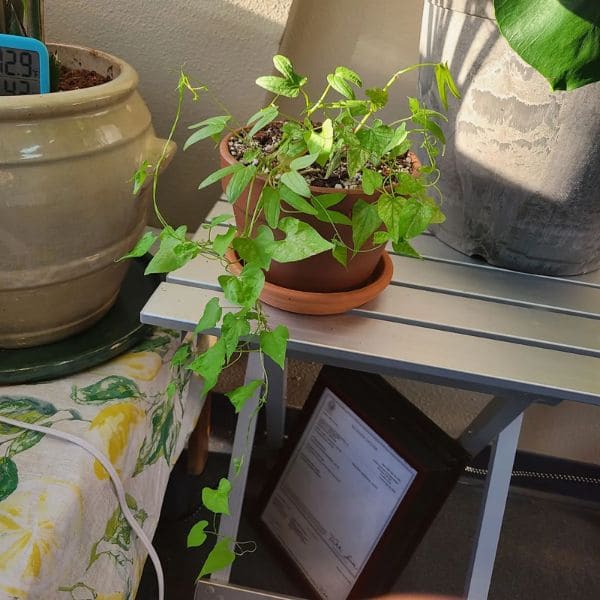
Once the seedlings are about 3 to 4 inches tall and all risk of frost has passed, usually around late spring, you can transplant them to a pot with good drainage holes.
Also, remember to place the pot outside for a few hours each day, gradually increasing their exposure to the elements over a week to ten days.
In addition, if you grow this plant outdoors, consider pairing it with sunflowers to provide natural support for the vines to climb.
Caring for Morning Glory
When you for morning glory, keep the following main requirements in mind:
- Ensure they receive at least 6-8 hours of direct sunlight daily.
- Use well-drained, slightly acidic to neutral soil.
- Water regularly but allow the soil to dry out between waterings.
- Provide support structure for the vines to climb.
- Use a low-nitrogen fertilizer every four to five weeks.
- Remove dead or yellowing leaves and spent flowers to encourage more blooms.
If not cared for properly, morning glory can spread rapidly and overtake other plants. You can refer to our tips to manage and control these flowers.
Light
These sun-loving plants thrive best with at least six to eight hours of direct sunlight each day. You should place them in a sunny spot to encourage vigorous growth and abundant blooms.
Without adequate light, morning glories tend to grow leggy and produce fewer flowers.
If you live in an area with intense afternoon sun, a spot with morning sunlight and light afternoon shade can help prevent scorching and keep your plants looking their best.
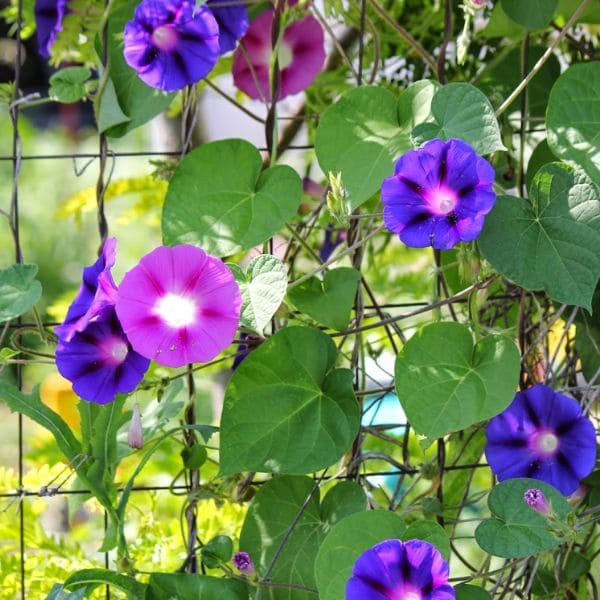
Soil
Morning glory thrives in well-drained, slightly acidic to neutral environments. Instead of using heavy, clay soils, you need to use a mix of potting soil and compost
If your garden soil is dense, consider amending it with sand or perlite to improve its texture.
Water
During the initial growth phase and the hot summer months, you’ll aim to provide about 1 inch of water per week either from rainfall or manual watering.
In my experience, watering deeply once or twice a week works well allowing the water to penetrate the soil and reach the roots.
If you plant in a pot like me, check the soil moisture frequently as containers can dry out faster.

Temperature and Humidity
These plants flourish in warm temperatures, ideally between 65°F and 85°F (18°C to 29°C).
They are sensitive to frost, so it’s best to plant them after the last frost date in your area, typically in USDA hardiness zones 2 through 11.
Morning glories also prefer moderate humidity levels. In overly humid conditions, they might be prone to fungal diseases, so ensure proper air circulation.
Fertilizer
You need to use a low-nitrogen fertilizer every four to five weeks during their growing period to promote healthy growth without producing too much foliage.
If your morning glories seem to be lacking in blooms, try switching to a high-phosphorus fertilizer.
Pruning
You should prune regularly to control the vigorous growth of morning glory and prevent it from becoming too unruly.
Start by removing any dead or yellowing leaves, which can harbor pests and diseases. Additionally, trimming back the vines encourages bushier growth and more flowers.
After the initial bloom, you can deadhead spent flowers to stimulate further blooming.
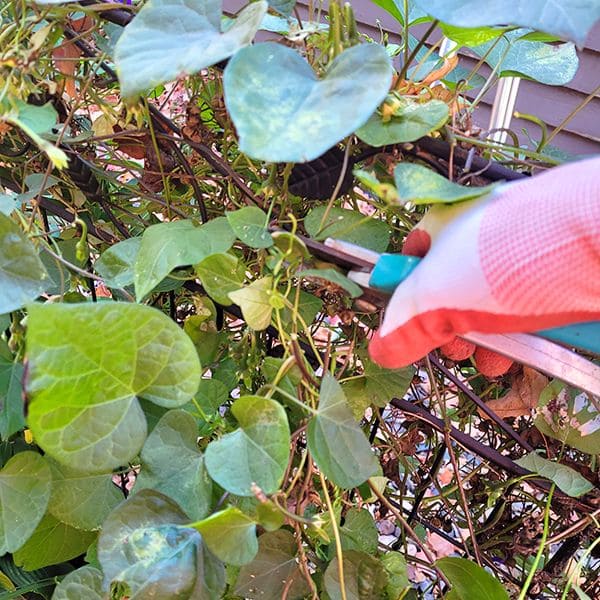
Staking
These climbing plants thrive when provided with a sturdy support structure.
I’ve found that using a trellis, bamboo stakes, or even a decorative garden arch not only helps the vines grow vertically but also adds an artistic element to the garden.
As the morning glories wind their way up, their vibrant blooms create a stunning visual display. But secure the stakes firmly in the ground and gently guide the young vines onto the support.
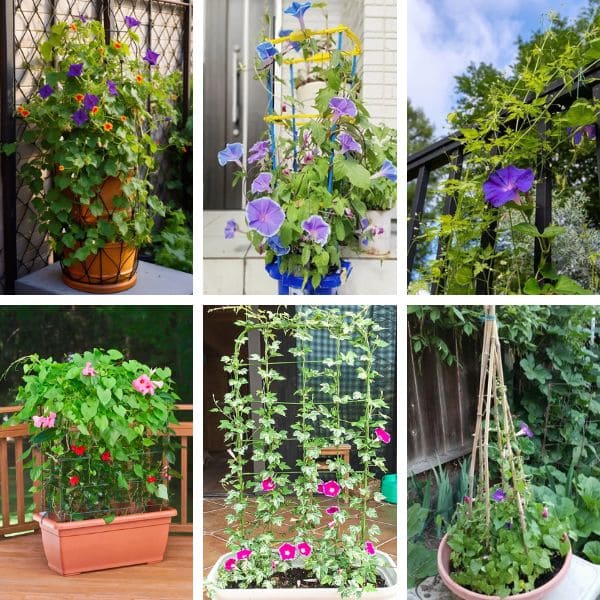
Pests and Diseases
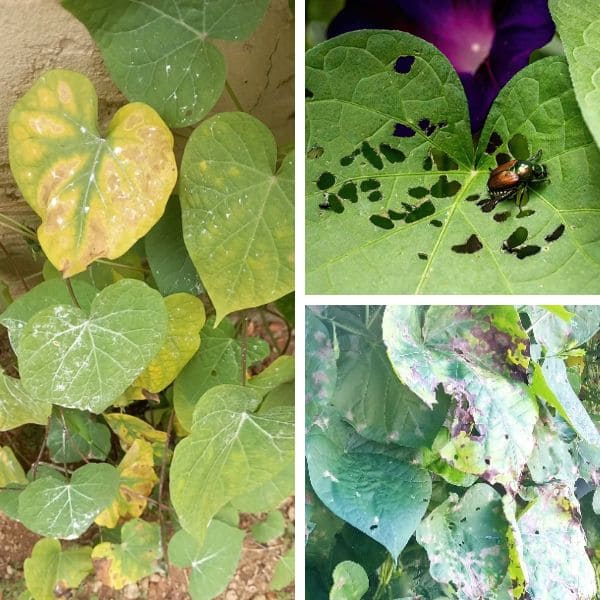
Aphids and spider mites are common culprits that can damage your foliage, but don’t worry because you can manage them with insecticidal soap or a strong spray of water.
Occasionally, caterpillars might appear, and handpicking them off the plants can be effective.
Besides, fungal diseases like powdery mildew and leaf spot can also pose problems, especially in humid conditions.
As a result, you need to ensure good air circulation and water at the base of the plants rather than overhead to prevent these issues.

In addition, sometimes, you can see rabbits, groundhogs and even deer visit your house and are attracted by the foliage of morning glory.
Two years ago, I was disheartened to find my morning glories devoured by deer during a brief absence. After that, I decided to start over and built a robust fence.
I made it at least 8 feet tall to prevent these excellent jumpers from getting in.
If you’re facing a similar problem, I recommend using sturdy materials like wire mesh or wooden slats, ensuring there are no gaps larger than 6 inches.
This way, deer, rabbits and even groundhogs can’t squeeze through and your morning glories will stay safe and flourish.
Harvest and Preservation
Typically, morning glories take about 3 to 4 months to bloom after planting.
Once your flowers have faded and the seed pods turn brown and papery, usually in late summer to early fall, it’s time to collect the seeds.
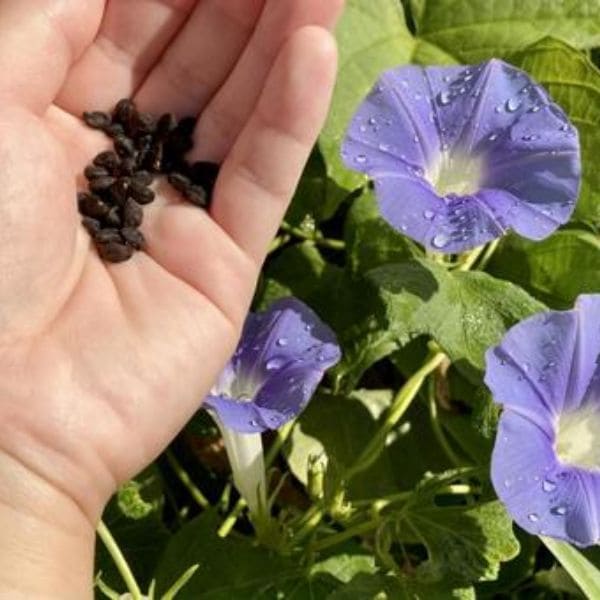
I usually wait for a dry day to harvest them, as moisture can cause mold. You need to open the pods and remove the seeds.
Then, store the dried seeds in a cool, dark place in a container. This method has always worked well for me ensuring that the seeds remain viable and ready for planting the next season.
FAQs
Do morning glories come back every year?
Morning Glories are typically grown as annuals in most regions. However, in warmer climates (USDA zones 9-11), they can behave as perennials and return each year.
Can I grow morning glory from a cutting?
Yes. You can take a healthy cutting just below a leaf node, remove the lower leaves, and place it in water or moist soil.
Until roots develop, you can transplant it to its final location.
Can you grow morning glories in a hanging basket?
Yes. Their trailing vines will cascade beautifully over the edges.
You need to use a large enough basket with good drainage, fill it with nutrient-rich potting mix, and provide a support structure or let the vines hang freely.
Which parts of the morning glory are toxic?
Morning glory seeds contain alkaloids that can be toxic if ingested in large quantities, causing nausea, vomiting, and hallucinations.
Why won’t my plant flower?
Maybe you don’t provide enough sunlight and over-fertilizer, especially with high-nitrogen fertilizers.
Additionally, check that the plant isn’t stressed by pests, diseases, or poor soil conditions. Pruning can also help by encouraging new growth and more blooms.


